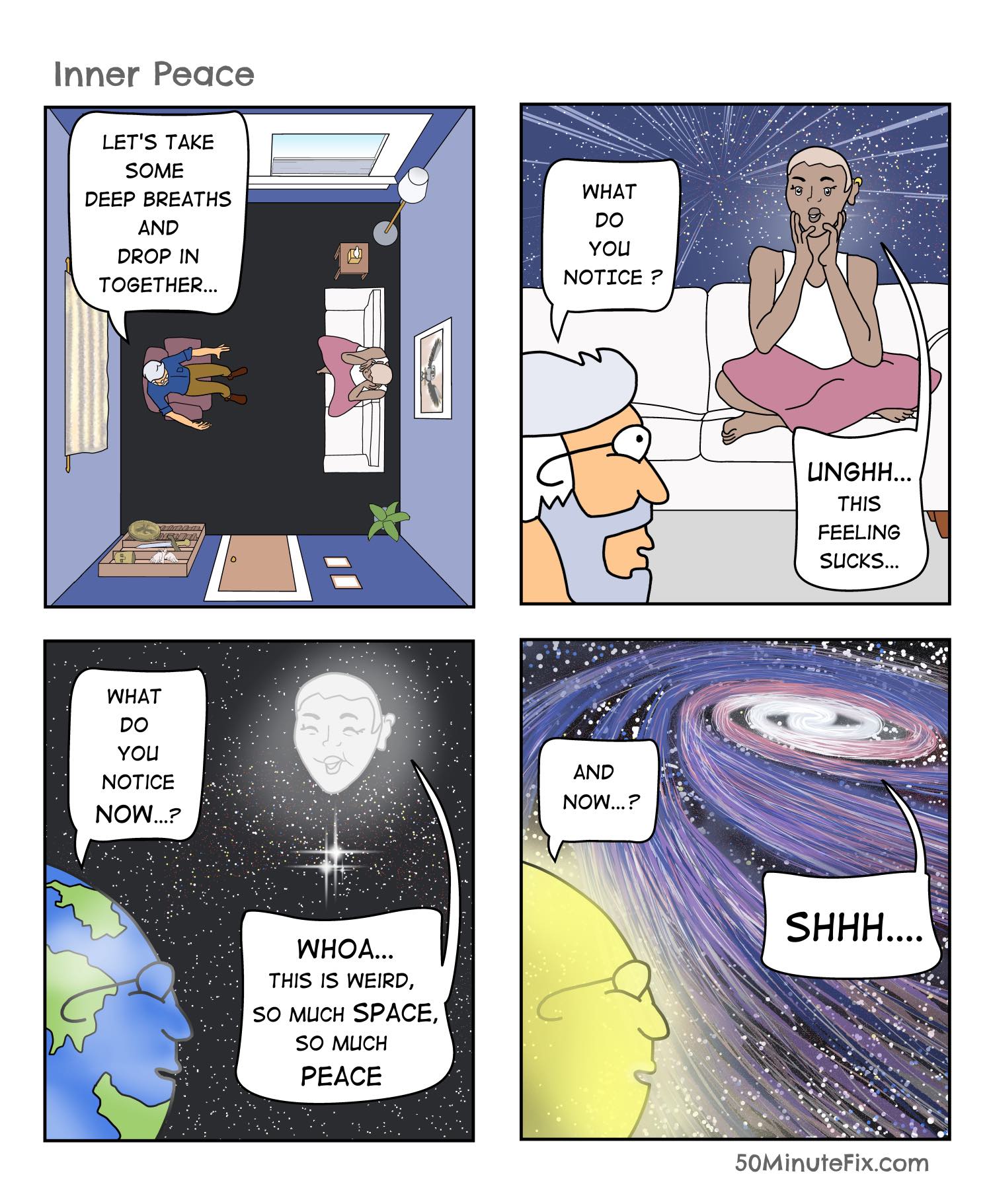The path to inner peace is not comfortable. It requires us to traverse through our psychological defenses, our emotional world, and our relationships. These layers often hold pain and fear so we avoid facing them. Willingness and support make it possible to negotiate each layer and connect with our spiritual core of inner peace. The path through these layers follows as such:
Layer 1: Defense– Anxiety and fear pump the brakes on our internal journey to inner peace. We develop a range of defenses to the anticipation of pain lurking under the surface and the anticipation of loss and change. The way through the layer of defense: Say ‘yes’ to traveling inward, facing life’s pain, and taking the quantum leap from the known to the unknown.
Layer 2: Emotion– The pain and pleasure of life flows through the sensations and feelings of the body. Befriending our neurobiological makeup, digesting the impact of life on the psyche, and growing out of emotional phobias allow vitality and humanity to flourish. The way through the layer of emotion: Practice emotional mindfulness, cultivate self-love, and surf the waves of experience.
Layer 3: Connection– Being witnessed by others on our messy and humbling path to inner peace can feel terrifying and bound with shame. As we become more comfortable with our inner emotional life, confidence and mastery emerge. We start to join forces with others on the path, compare notes, and offer up our talents to be of service. The way through the layer of connection: Generously and courageously share your journey with others.
Layer 4: Inner Peace– Here we reconnect with basic goodness, our core state. This is the non-dual space where self becomes a Self without boundaries. A sense of cosmic oneness, wisdom, and compassion emerge. The way to stay tethered to inner peace: Breathe through defenses. Breathe into emotions. Breathe towards connection with others, and breathe beyond who you think you are.
This map to inner peace is a simplified version of the AEDP (Accelerated Experiential Dynamic Psychotherapy) model created by Diana Fosha. AEDP eloquently teaches about these layers or ‘states’ referred to as the “Phenomenology of the Transformational Process,” which inspired this comic.


